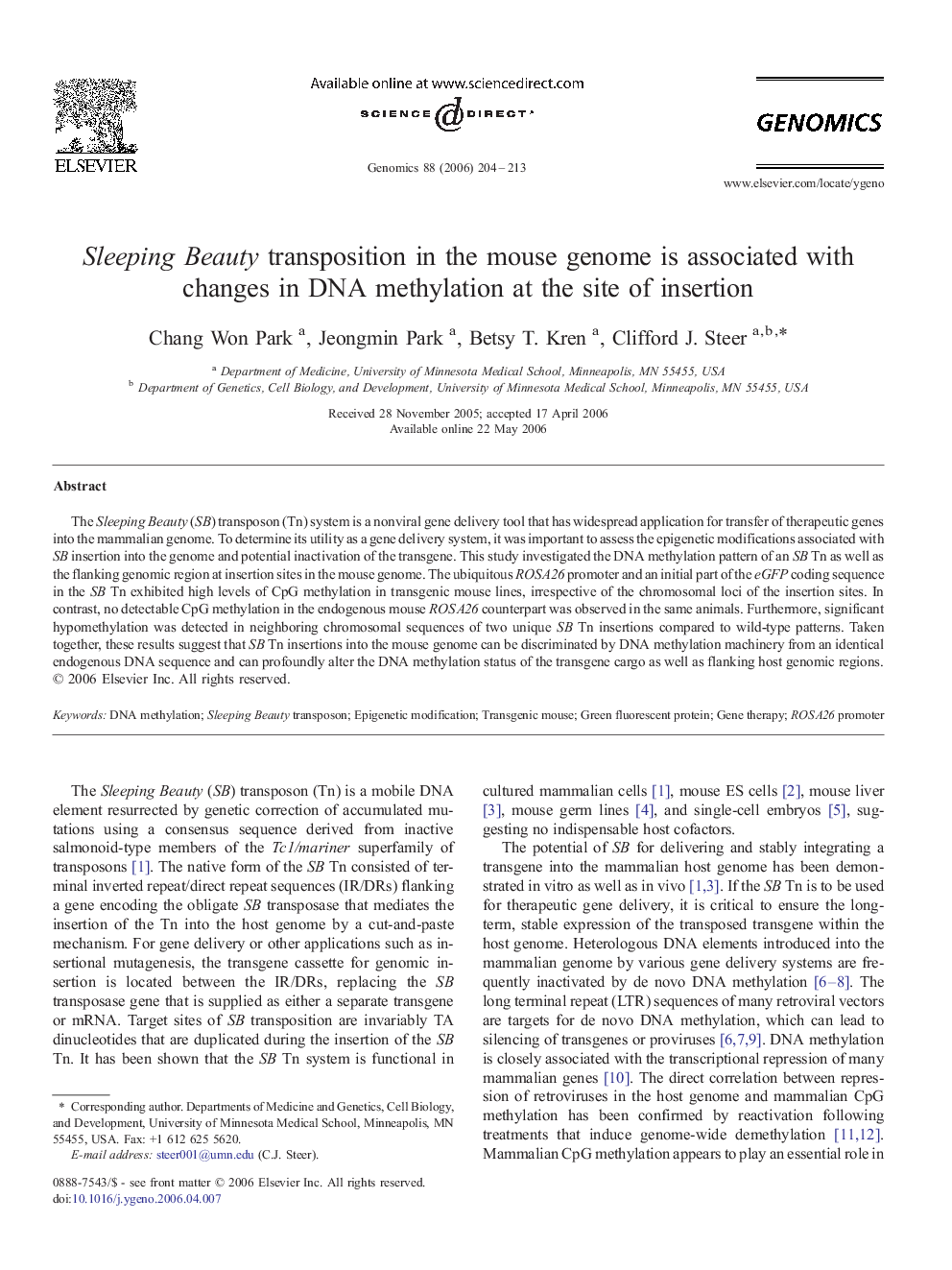| Article ID | Journal | Published Year | Pages | File Type |
|---|---|---|---|---|
| 2821385 | Genomics | 2006 | 10 Pages |
The Sleeping Beauty (SB) transposon (Tn) system is a nonviral gene delivery tool that has widespread application for transfer of therapeutic genes into the mammalian genome. To determine its utility as a gene delivery system, it was important to assess the epigenetic modifications associated with SB insertion into the genome and potential inactivation of the transgene. This study investigated the DNA methylation pattern of an SB Tn as well as the flanking genomic region at insertion sites in the mouse genome. The ubiquitous ROSA26 promoter and an initial part of the eGFP coding sequence in the SB Tn exhibited high levels of CpG methylation in transgenic mouse lines, irrespective of the chromosomal loci of the insertion sites. In contrast, no detectable CpG methylation in the endogenous mouse ROSA26 counterpart was observed in the same animals. Furthermore, significant hypomethylation was detected in neighboring chromosomal sequences of two unique SB Tn insertions compared to wild-type patterns. Taken together, these results suggest that SB Tn insertions into the mouse genome can be discriminated by DNA methylation machinery from an identical endogenous DNA sequence and can profoundly alter the DNA methylation status of the transgene cargo as well as flanking host genomic regions.
